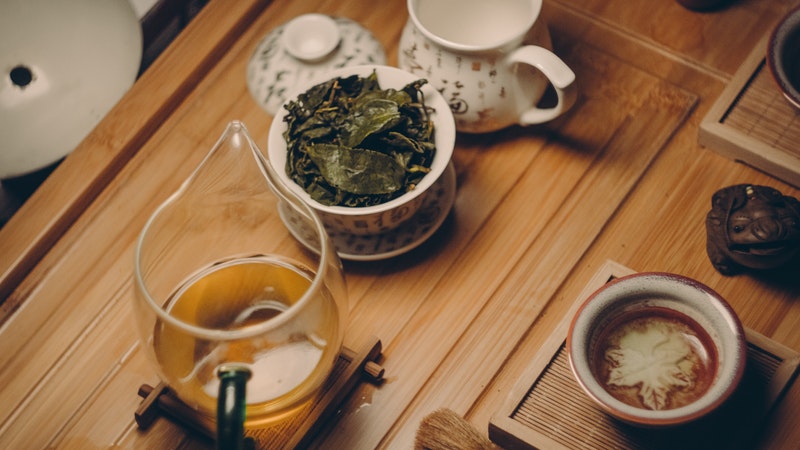Chemistry of Tea: Antioxidants and Other Elements
Episode #4 of the course The science of tea by Lukasz J. Binkowski
Welcome to the fourth lesson of the course.
In our previous lesson, we discussed the ingredients in an infusion, which explain the stimulating character and calming influence of tea: caffeine and theanine. We also covered some vitamins.
Today, we will focus on the compounds that make tea a truly healthy beverage. But before we do that, we need to delve a little into biology to understand the processes that take place in our bodies and are responsible for aging and some diseases.
Free Radicals and How They Affect Our Health
Nowadays, free radicals (also called reactive oxygen species, or ROS, which are ions that may negatively influence our bodies) are frequently discussed in the media because they are responsible for accelerating many diseases such as cancer and premature aging.
Through evolution, our bodies have developed mechanisms that allow us to repair oxidative damage (done by free radicals). This capability is stronger when we are young and becomes weaker with age.
The potential source of oxidative stress (i.e., the influence of free radicals) is huge since it includes metabolic processes and external stimulants such as environmental pollution, radiation, and toxins. Their combined influence may exceed the repair capabilities of our bodies. This may result in an accumulation of DNA damage in our cells, mutations, problems with cell cycle (cancer), and accelerated aging. It is therefore extremely important for our health to limit exposure to free radicals (which polluted environments and processed food often make unfeasible) or to add to our diet food rich in compounds that help us deal with oxidative stress. Such components are called antioxidants.
Antioxidants
Tea has significant concentrations of antioxidants, which fulfill numerous functions, including pigmentation, UV filtration, chemical messaging, physiological regulation, cell-cycle inhibition, and even chemical defense against animals.
From a chemical point of view, antioxidants belong to flavonoids, which themselves constitute a very large group, within which there is a group of flavanols especially abundant in tea. Among these compounds, we count catechin and its derivatives, proanthocyanidins, as well as theaflavins and thearubigins, which occur in oxidized teas. Recent research revealed that melatonin, one of the most well-known antioxidants, is also found in tea.
The effectiveness of antioxidants in reducing the oxidative stress is quite high. There is scientific research linking the reduction in cancer morbidity with the consumption of tea. Tea, of course, isn’t a pill against cancer, but thanks to its antioxidant properties, it has a beneficial influence on DNA repair that is directly related to cancer morbidity.
The process of brewing tea causes emergence of numerous derivatives of antioxidants, which means that each type of tea may be characterized by different antioxidants. But we cannot say that some types of tea contain more antioxidants than others; we can only say that the composition of antioxidants in each type of tea is different. This is a good reason for us to drink a variety of teas to provide our bodies with as many antioxidants as possible.
Other Elements
Tea leaves are also rich in other elements, such as potassium, calcium, zinc, and magnesium. The concentrations of these elements are very low, and only concentrations of potassium may be higher, which is, of course, good for our health since it belongs to the group of essential elements.
There is also research that has revealed higher concentrations of fluoride in tea leaves due to a special mechanism and ability in tea plant root absorption. In some teas (depending on the type and country of origin), fluoride concentrations may be increased. However, the recommended daily intake would suggest that it poses no danger (this research is currently underway, since we know that the type of tea and localization may significantly influence the concentration).
Tea leaves have also high concentrations of aluminum, but it does not survive in the infusion, since it needs low pH levels of water to exist. Adding lemon to tea significantly reduces the pH level of the infusion, so if you drink tea with lemon, please remember to add it before the leaves.
In the next lesson, we’ll discuss tea production.
Till the next time,
Lukasz
Recommended book
Tea: History, Terroirs, Varieties by Kevin Gascoyne, Francois Marchand, Jasmin Desharnais
Share with friends

